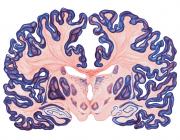The representation of tool and non-tool object information in the human intraparietal sulcus.
Publication Year
2013
Type
Journal Article
Abstract
Humans have an amazing ability to quickly and efficiently recognize and interact with visual objects in their environment. The underlying neural processes supporting this ability have been mainly explored in the ventral visual stream. However, the dorsal stream has been proposed to play a critical role in guiding object-directed actions. This hypothesis is supported by recent neuroimaging studies that have identified object-selective and tool-related activity in human parietal cortex. In the present study, we sought to delineate tool-related information in the anterior portions of the human intraparietal sulcus (IPS) and relate it to recently identified motor-defined and topographic regions of interest (ROIs) using functional MRI in individual subjects. Consistent with previous reports, viewing pictures of tools compared with pictures of animals led to a higher blood oxygenation level-dependent (BOLD) response in the left anterior IPS. For every subject, this activation was located lateral, anterior, and inferior to topographic area IPS5 and lateral and inferior to a motor-defined human parietal grasp region (hPGR). In a separate experiment, subjects viewed pictures of tools, animals, graspable (non-tool) objects, and scrambled objects. An ROI-based time-course analysis showed that tools evoked a stronger BOLD response than animals throughout topographic regions of the left IPS. Additionally, graspable objects evoked stronger responses than animals, equal to responses to tools, in posterior regions and weaker responses than tools, equal to responses to animals, in anterior regions. Thus the left anterior tool-specific region may integrate visual information encoding graspable features of objects from more posterior portions of the IPS with experiential knowledge of object use and function to guide actions.
Keywords
Journal
J Neurophysiol
Volume
109
Pages
2883-96
Date Published
06/2013
ISSN Number
1522-1598
Alternate Journal
J. Neurophysiol.
PMID
23536716

